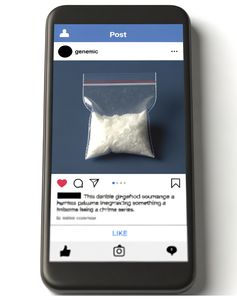On November 20, 2023, Anne Milgram, head of the US Drug Enforcement Agency (DEA), said at a press conference: “Fentanyl poses the greatest threat to Americans today, devastating families and becoming the leading cause of death for those aged 18 to 45.” The statement followed the successful ‘Operation Blue Brothers’, aimed at dismantling an international drug supply chain. The operation, initiated following the death of 20-year-old Diamond Lynch, exposed a supply chain originating in China, involving drug precursors, progressing to clandestine labs controlled by the Sinaloa drug cartel in Mexico, then reaching wholesale distributors in Los Angeles and retail distributors in Washington, DC.
Fentanyl, a potent synthetic opioid approved by the US FDA for severe pain, gained prominence in the US black market in 2014. Over the past decade, fentanyl and related substances have significantly contributed to the surge in drug overdose deaths in the country. People both knowingly and unknowingly consume fentanyl and synthetic opioids, as they are often mixed or sold as other drugs like heroin, cocaine or counterfeit pills.
Interestingly, while briefing about ‘Operation Blue Brothers’ that led to the arrest of 25 people, Milgram emphasised that the defendants in the case employed Instagram to discover their sources of supply, explore distribution channels, specify pill details like colour, quantity and pricing, and coordinate shipments and payments. “This fentanyl distribution conspiracy―which started with pills sourced in Mexico and spanned across the United States―would not have been possible without Instagram,” she said, while adding that “lawful access” to Instagram messages led to the arrests and dismantling of the conspiracy. But then, Milgram also warned against Meta, the company that owns Instagram, implementing “warrant-proof” end-to-end encryption. “This kind of work to protect the public will become increasingly difficult―if not impossible―if social media companies implement ‘warrant-proof’ end-to-end encryption, that simply turns the lights off and looks the other way while criminals use these platforms to spread poison in our communities,” she said.
Milgram's concern represents a widespread challenge confronted by law enforcement globally. It is a matter of concern for Indian agencies as well. In early December, Meta began implementing default end-to-end encryption settings for all personal chats and calls on its platforms. Shortly thereafter, Maharashtra Deputy Chief Minister Devendra Fadnavis remarked, “Drugs are being marketed on Instagram.”
International counter-narcotic agencies have already flagged India as the largest source of illicit synthetic opioid tramadol. Many western experts believe that India could evolve into a source for both precursors and finished products of various illicit opioids, including variants of Fentanyl, although China remains the primary source for the precursors. And, social media platforms, facilitating the easy transactions and transportation of illicit drugs across the world, clearly remain the elephant in the room.


